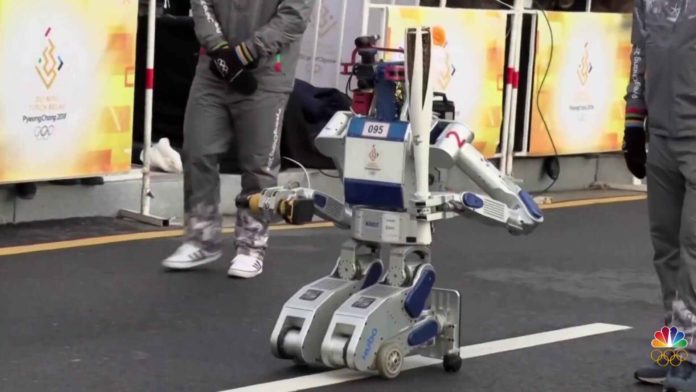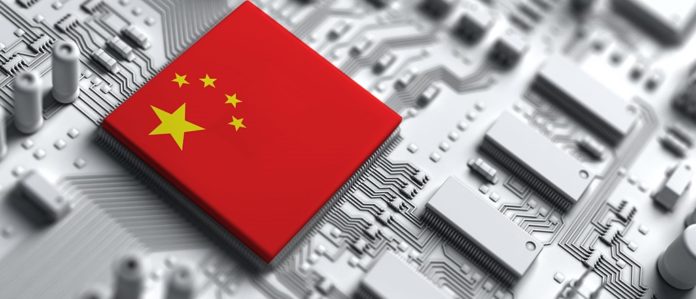Tech
Top 10 Most Technologically Advanced Countries

Top 10 Most Technologically Advanced Countries: Innovation has ended up being one of the country’s key weapons. Innovation works on the human experience by applying logical information to the economy, diversion, trade, instruction, correspondences, medication, and different regions. The capacity of a country to integrate its innovative ability, like procedures, abilities, techniques, and cycles, to reasonable human existence objectives, for example, the formation of labor and products is the heartbeat of mechanical progression.
Numerous nations worldwide have strived to hold and achieve the situation with being a mechanically progressed country.
The main ten nations viewed as technologically advanced are:
JAPAN

Japan – Technologically Advanced Country
Beginning around 1973, the nation has been endeavoring to decrease its dependence on unfamiliar gas. Its endeavors were compensated in 2008 when seven atomic reactors were initiated. Numerous Nobel Prizes have been granted to Japanese researchers. Japan will assemble the world’s most exceptional eco-town in the following three years.
Japan is the world’s eleventh most populous country, as well as one of its most densely inhabited and urbanised. Three-fourths of the country’s topography is hilly, squeezing its 125.44 million people on narrow coastal plains. There are 47 administrative prefectures and eight traditional regions in Japan. With almost 37.4 million inhabitants, the Greater Tokyo Region is the world’s most populated metropolitan area.
Japan has been inhabited since the Upper Paleolithic period (30,000 BC), but the earliest documented reference of the archipelago is in a Chinese chronicle (the Book of Han), which was completed in the 2nd century AD. Between the fourth and ninth centuries, Japan’s kingdoms were united under an emperor and the imperial court located in Heian-ky. Political control was held by a series of military dictators (shgun) and feudal lords (daimy) beginning in the 12th century, and was enforced by a class of warrior nobles (samurai). Following a century of civil conflict, Japan was reunified in 1603 under the Tokugawa shogunate, which pursued an isolationist foreign policy. A US navy compelled Japan to open commerce to the West in 1854, leading to the collapse of the shogunate and the restoration of imperial rule in 1868. During the Meiji period, the Empire of Japan adopted a Western-style constitution and embarked on an industrialization and modernization programme. Japan invaded China in 1937 and entered World War II as an Axis power in 1941, amidst a surge in militarism and foreign expansion. After defeat in the Pacific War and two atomic bombs, Japan surrendered in 1945 and came under Allied occupation for seven years, during which it enacted a new constitution. Japan has retained a unitary parliamentary constitutional monarchy with a bicameral legislature, the National Diet, under the 1947 constitution.
Interestingly, Panasonic’s ‘whole arrangements’ innovation will be utilized to control sharp networks. Logical examination is notable in Japan. Autos, hardware, producing, tremor designing, optics and modern mechanical technology are only a couple of the areas where Japanese specialists have made huge commitments.
SOUTH KOREA

South Korea – Technologically Advanced Country
South Korea is home to innovation monsters like LG, Hyundai, and Samsung. These organizations rival significant innovation organizations like Apple and Toyota. In areas, for example, mechanical technology, South Korean specialists have made urgent commitments. South Korea’s normal web speed is multiple times that of the United States.
The Korean Peninsula has been populated since the Lower Paleolithic epoch. Its first kingdom was mentioned in Chinese chronicles as early as the 7th century BCE. Korea was controlled by the Goryeo dynasty (918–1392) and the Joseon dynasty (1392–1897) after the unification of the Three Kingdoms of Korea into Silla and Balhae in the late 7th century. In 1910, the subsequent Korean Empire was captured by the Empire of Japan. Following the Japanese surrender in World War II, Korea was divided into two zones: a northern zone held by the Soviet Union and a southern zone occupied by the United States. Following the failure of reunification discussions, the latter became the Republic of Korea in August 1948, while the former became North Korea.
The Korean War began in 1950 with a North Korean invasion, which saw major United Nations-led engagement in favour of the South, while China engaged in support of the North with Soviet help. Following the end of the war in 1953, the country’s economy took off, posting the world’s fastest gain in average GDP per capita between 1980 and 1990. The June Struggle brought an end to autocratic government in 1987, and the nation is currently regarded as one of Asia’s most advanced democracies, with the greatest level of press freedom. [10] Political scandals, on the other hand, have been a concern in recent years; both living former South Korean presidents have been condemned to jail for offences ranging from abuse of authority to bribery and embezzlement, with one still serving his term.
South Korea has turned into a worldwide innovator in data and correspondence advances because of its high R&D power.
Must Read : Top 10 Most Developed Countries
CHINA

China – Technologically Advanced Country
Chinese enterprises are driving mechanical development in arising regions like new and sustainable power, progressed thermal power, cutting edge telecom advances, mechanical technology, space innovation, and internet business, as well as in more customary fields like gadgets, producing, vehicles, high velocity rail, and airplane.
China arose as one of the world’s earliest civilizations in the rich Yellow River valley of the North China Plain. For much of the two millennia from the first to the nineteenth centuries, China was one of the world’s top economic powers. China’s political structure has been founded on absolute hereditary monarchy, or dynasties, for millennia, beginning with the semi-legendary Xia dynasty in the 21st century BCE. China has grown, divided, and reunified countless times since then. The Qin unified central China and formed the first Chinese empire in the third century BCE. The ensuing Han dynasty (206 BCE – 220 CE) witnessed the development of some of the most advanced technologies of the time, including papermaking and the compass, as well as agricultural and medicinal advancements. Gunpowder and moveable type were invented during the Tang dynasty (618–907) and Northern Song dynasty (960–1127), completing the Four Great Inventions. As the new Silk Road attracted traders as far as Mesopotamia and the Horn of Africa, Tang culture expanded throughout Asia. In the nineteenth century, the Qing dynasty, China’s final monarchy and the territorial basis for modern China, suffered catastrophic losses at the hands of Western imperialism.
The Chinese monarchy ended with the Xinhai Revolution in 1912, when the Republic of China (ROC) supplanted the Qing dynasty. During World War II, the Japanese Empire invaded China. The Civil War ended in a territorial separation in 1949, when the Chinese Communist Party (CCP) formed the People’s Republic of China on the mainland and the Kuomintang-led ROC government fled to Taiwan. Both claim to be China’s sole legal government, despite the fact that the UN has recognised the PRC as the sole representative since 1971. Since 1978, China has implemented a series of economic reforms, and it joined the World Trade Organization in 2001.
The CCP presently governs China as a unitary one-party communist country. China is a permanent member of the United Nations Security Council and a founding member of a number of multilateral and regional cooperation organisations, including the Asian Infrastructure Investment Bank, the Silk Road Fund, the New Development Bank, the Shanghai Cooperation Organization, and the RCEP, as well as a member of the BRICS, G8+5, G20, APEC, and the East Asia Summit. It is among the lowest in worldwide rankings of civil liberties, government transparency, press freedom, religious freedom, and ethnic minorities. Political dissidents and human rights activists have accused Chinese authorities for severe human rights violations, including political persecution, mass censorship, mass monitoring of its residents, and violent suppression of rallies.
Utilizing state-drove procedures, for example, Made in China 2025 and the New Generation of Artificial Intelligence Development Plan, it is endeavoring to turn into an overall mechanical pioneer. It presently centers around robots, semiconductors, rapid trains, supercomputers, and genomics, among different subjects.
UNITED STATES OF AMERICA

United States Of America – Technologically Advanced Country
The United States is an overall innovation force to be reckoned with, home to the world’s biggest innovation goliaths like Google, Facebook, Apple, and Microsoft. Silicon Valley is home to a portion of the world’s biggest tech partnerships and has motivated and created a whole age of computer programmers and innovation endeavors. A big part of the trade exchanged firms with the most grounded R&D uses in their latest financial years, including Amazon and Microsoft, were controlled by Americans.
For quite a long time, the United States has focused on space investigation, drugs, guard frameworks, and media communications. This nation flaunts the world’s generally strong and mechanically progressed military.
The Thirteen British Colonies founded along the East Coast gave rise to the United States. Disputes with the United Kingdom about taxes and political representation sparked the American Revolutionary War (1775–1783), which resulted in the country’s independence. The United States began spreading across North America in the late 18th century, gradually gaining additional territory, often by conflict, frequently displacing Native Americans, and admitting new states; by 1848, the United States had covered the continent. Slavery was lawful in the southern United States until the second half of the nineteenth century, when it was abolished as a result of the American Civil War. The Spanish–American War and International War I established the United States as a world power, and World War II’s aftermath established the United States and the Soviet Union as the world’s two superpowers. Both sides fought in the Korean and Vietnam Wars throughout the Cold War, although they avoided direct military engagement. They engaged in the Space Race, culminating in the 1969 voyage that landed people on the Moon for the first time. The breakup of the Soviet Union in 1991 effectively ended the Cold War, leaving the United States as the world’s lone superpower.
The US is a federal presidential-constitutional republic with three distinct departments of government, including a bicameral legislature. It is a founding member of the United Nations, the World Bank, the International Monetary Fund, the Organization of American States, NATO, and several other international organisations. It is a member of the United Nations Security Council on an indefinite basis. Its population has been deeply impacted by centuries of immigration, and it is regarded as a melting pot of cultures and races. The United States ranks highly on worldwide indices of economic freedom, quality of life, education, and human rights; it also has a low degree of perceived corruption. However, it has been chastised for racial, wealth, and financial inequalities; the usage of the death penalty; high imprisonment rates; and the lack of universal health care.
Must Read : Top 11 Largest Countries In The World (Globally)
GERMANY

Germany – Technologically Advanced Country
For quite a long time, Germany has been a cutting edge force to be reckoned with. Germany is known for its designing schools, which produce a portion of the top specialists on the planet. Germany’s administration, through colleges, is a major ally of innovative work. In areas, for example, space travel and nanotechnology, German scientists have made critical commitments.
A significant lump of Germany’s prosperity might be credited to mechanical designing and the auto business specifically. Germany has additionally arisen as a worldwide forerunner in clinical, military innovation, and framework.
Since ancient antiquity, many Germanic tribes have occupied the northern regions of contemporary Germany. Before the year 100, there existed an area known as Germania. German regions were an important element of the Holy Roman Empire in the 10th century. Northern German territories became the Protestant Reformation’s epicentre throughout the 16th century. The German Confederation was created in 1815, following the Napoleonic Wars and the breakup of the Holy Roman Empire in 1806. Germany became a nation-state in 1871, when the majority of German states merged to form the Prussian-dominated German Empire. The Empire was superseded by the semi-presidential Weimar Republic following World War I and the German Revolution of 1918–1919.
The Nazi takeover of power in 1933 resulted in a dictatorship, World War II, and the Holocaust. Following the end of World War II in Europe and a period of Allied occupation, Germany was divided into the Federal Republic of Germany, often referred to as West Germany, and the German Democratic Republic, commonly referred to as East Germany. The German Democratic Republic was a communist Eastern Bloc state and Warsaw Pact member, whereas the Federal Republic of Germany was a founding member of the European Economic Community and the European Union. Following the fall of communism, the former East German states joined the Federal Republic of Germany on 3 October 1990, becoming a federal parliamentary republic.
RUSSIA

Russia – Technologically Advanced Country
Russia’s economy is filled by its huge regular assets. Oil and petroleum gas, specifically, represent a huge part of the nation’s GDP. The SolarWinds break, which was completed by Russia’s Foreign Intelligence Service (SVR), uncovered digital production network weaknesses and affected a huge number of private area ventures in the United States and different countries.
Russian large equipment is notable, and its guarded long-range surface-to-air, aerial ICMB rockets are positioned as the best on the planet.
Must Read : Top 10 Dangerous Countries
UNITED KINGDOM

United Kingdom – Technologically Advanced Country
The United Kingdom is a created country with huge financial, political, logical, and social clout on the global stage. England has the fourth best correspondences innovation on the planet, as indicated by the International Telecommunications Union Index. With Microsoft and Amazon planning to open help places for their cloud administrations in the UK, we could see more organizations stick to this same pattern, bringing about an intrusion of IT occupations in the UK.
The disclosure of hydrogen, the train motor, and the fly motor are completely credited to it.
SINGAPORE

Singapore – Technologically Advanced Country
Is it true or not that you are searching for a mechanical forward leap? Development and advancement are imbued in Singapore’s way of life. Singapore was named the most creative country in Asia in the 2017 Global Innovation Index. Organizations in Singapore have prompt admittance to one of the world’s most exceptionally progressed IT foundations.
The nation is said to have the world’s quickest web, with family web paces of up to 1Gbps.
Must Read : Top 10 Countries with Highest GDP
ISRAEL

Israel – Technologically Advanced Country
Israel has formed into a mechanical and innovative force to be reckoned with on an overall scale. In Israel, most people, are expected to serve in the military subsequent to moving on from secondary school. Israelis bring their tactical encounters into the private area subsequent to serving in the military, first in their scholarly examinations and afterward in business. Also, a few Israeli headways can be found in moves up to Air Force contenders and Army hardware in the United States.
Israel is one of the best five nations on the planet with regards to space science. Israel was the main country to make an ongoing observation automated ethereal vehicle (UAV).
SWITZERLAND

Switzerland – Technologically Advanced Country
The Alpine nation has ascended to the first spot on the list because of its change into creative interests into results, which is a significant justification behind its prosperity. In spite of its unobtrusive size, Switzerland drives the world in regard of developments per capita and persistently creates excellent advancement. It professes to be a critical spot for industry-college research cooperation.
It’s difficult to understand the Swiss IT industry without tending to the fintech area. More than 100 of Switzerland’s 220 fintech organizations are associated with the crypto and blockchain industry, making it the most evolved fintech region.
Must Read : Top 10 Smallest Countries




















